Your cart is currently empty!
Category: How Things Grow
-
Pushing It
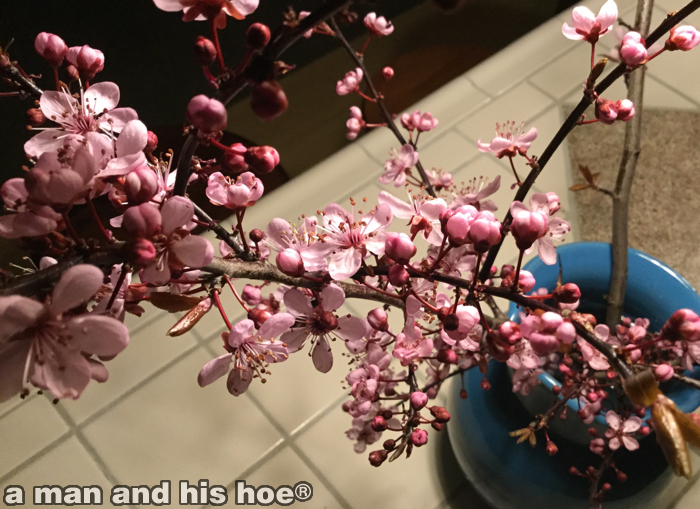
So many of the fruits we love to eat are so beautiful long before they become fruits. The plum branches we pruned bloomed when we brought them indoors. Soon they will be blooming outdoors too.
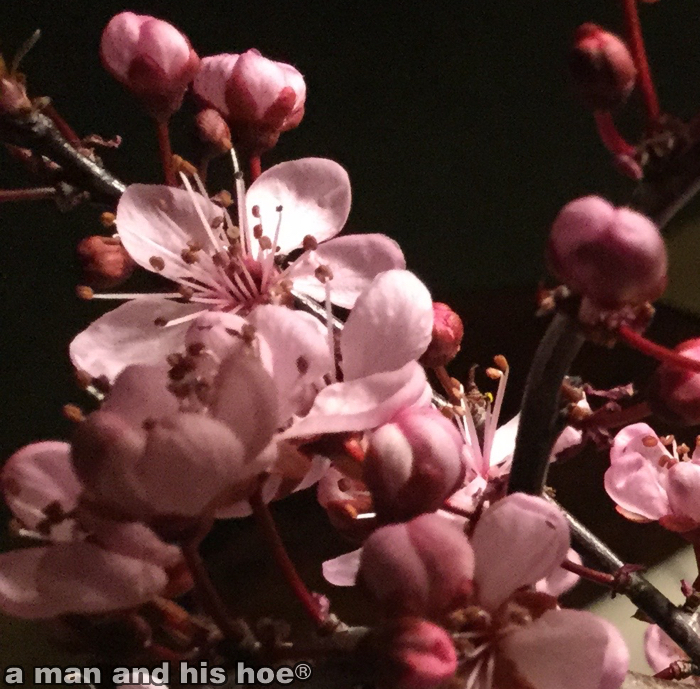
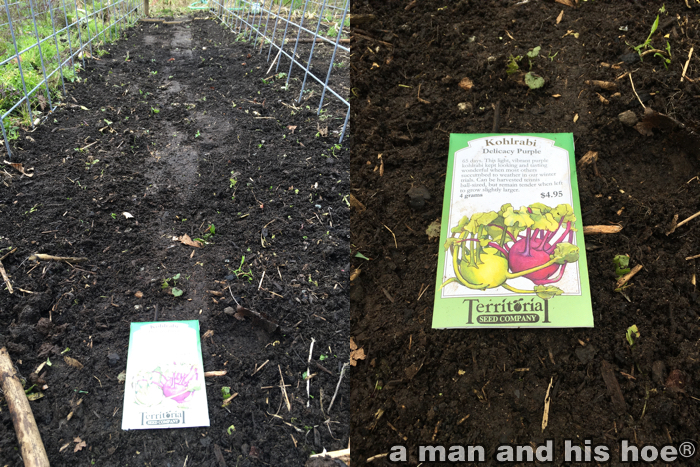
I’m pushing it, planting vegetables already. But in the garden I see the new leaves of last year’s vegetables which seeded: baby leaves of ruby streaks and kale poking out of the ground. If those seeds are sprouting, with luck the rows of kohlrabi I planted this afternoon will sprout too.
The earth is alive with worms, bugs, and tiny winged things. Under the microscope this afternoon I saw a million creatures in a drop of soil: bacteria, fungi, amoebae, and nematodes. I’ve got to figure out how to hover over the delicate soil so I can weed and plant without compressing it. It is so full of life, that I take one step and a million creatures gasp under the weight of my foot, “I can’t breathe! I can’t breathe!” Helium wings? Zip lines strung a few feet above the earth so I can fly over it without putting any weight on the soft earth? Tilling is madness when your soil is alive. The earthworms, and bugs, and fungi, and bacteria, and nematodes, and micro arthropods fluff the soil with all their burrowing and scurrying about and chasing after each other, that the soil is airier and lighter than any tilling could possibly accomplish.
-
From the Core
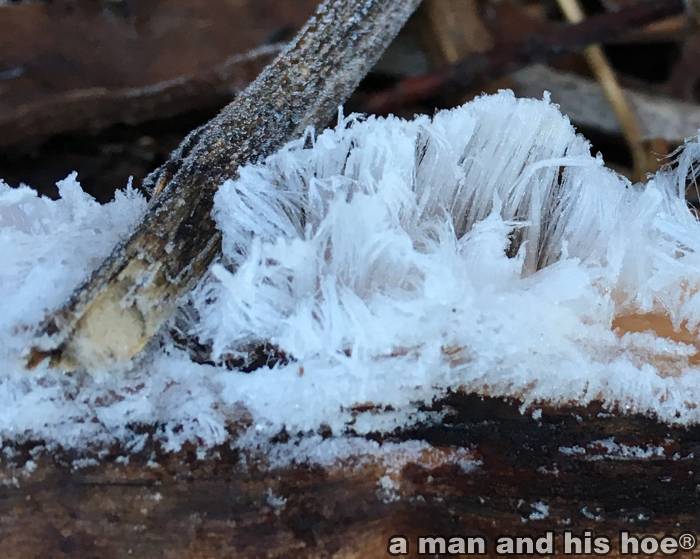
A frosty morning after a clear night. Even the daffodil leaves are dusted with frost, giving their green leaves a muted hue.

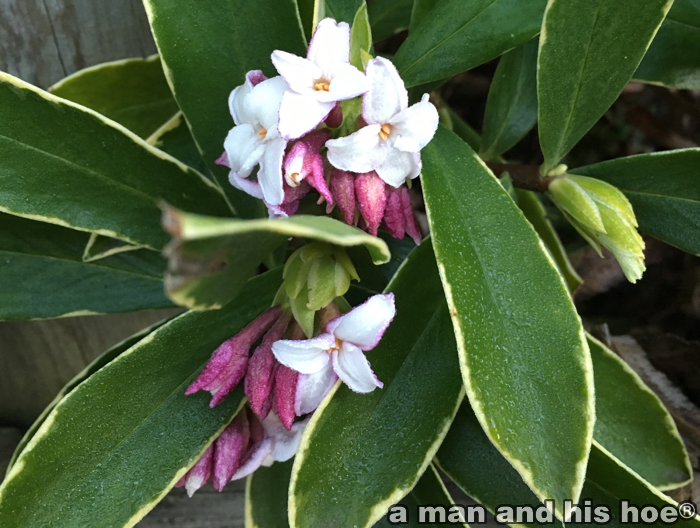

Where do branches come from? Split a tree apart and it’s clear they come from the core. So when you look up at a tree and gaze at its branches, you can picture them penetrating to the core of the tree. That’s where branches come from.

Where branches come from isn’t on the minds of these hens. They’re busy looking for good things to eat in the warming spring earth. I saw a garden snake slithering through the brush today. I don’t think I’ve ever seen a garden snake in February before.
-
What to Do with Tree Bones

A stack of tree bones lie on the ground, left overs from pruning a plum tree. What to do with tree bones? The thicker bones can be turned into coasters. Cut the coasters from the same bone, and you can later stack them and they’ll look like a single log.
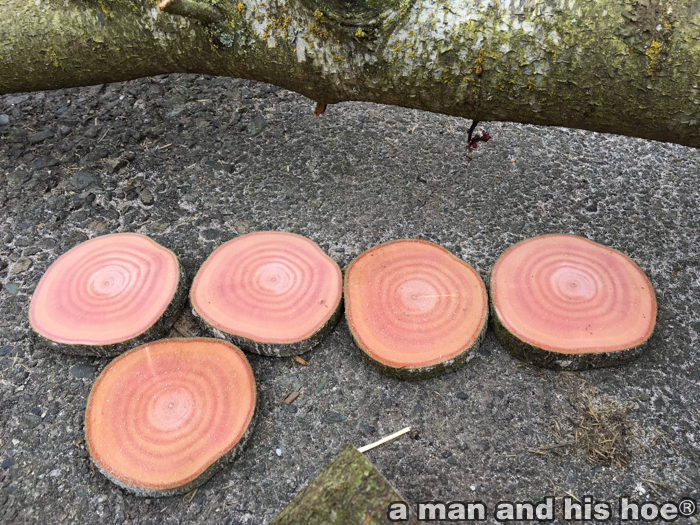
They also make good firewood. Next fall or winter, this pile of tree bones, dried through the summer, will keep the house warm for a cozy evening. When you cut and stack these hard tree bones, it’s hard to imagine that most of the material in them came out of thin air. But it’s what plants and trees do, breathe in the carbon out of the air and turn it into mass. When I burn it, most of the mass will go back into the air, only to be sucked in and made into mass by other trees and plants. When humans die, we often say, “Ashes to ashes, dust to dust.” When trees and plants die, we should say, “Gasses to gasses, water to water.”
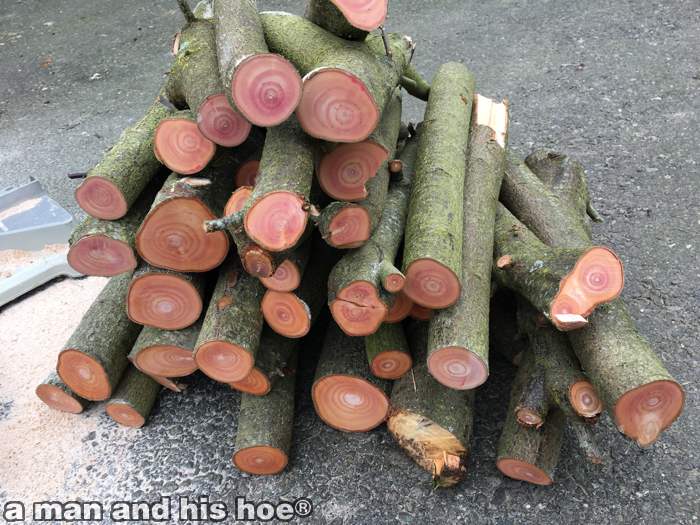
-
The Colors Are Back, so Is the Sting
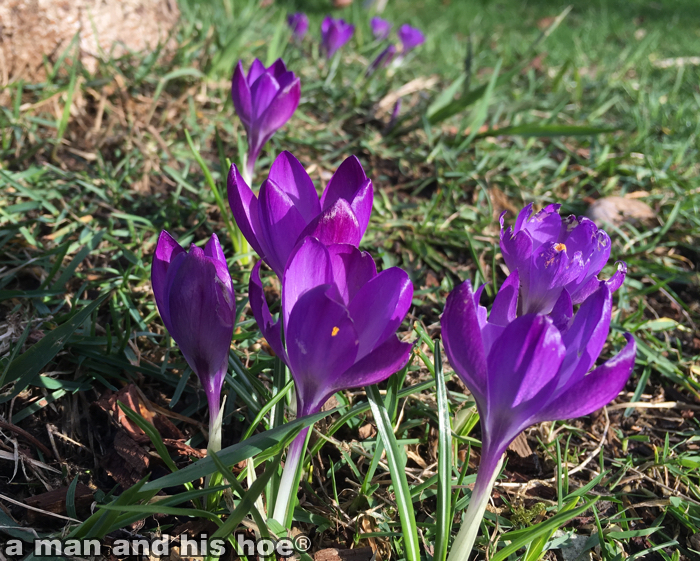
Spring should be called Colors. The drab hues of winter give way to the brilliance of cobalt skies, iridescent hue of flowers, and emerald green of new leaves. The crocus are out which means winter has gone for sure.
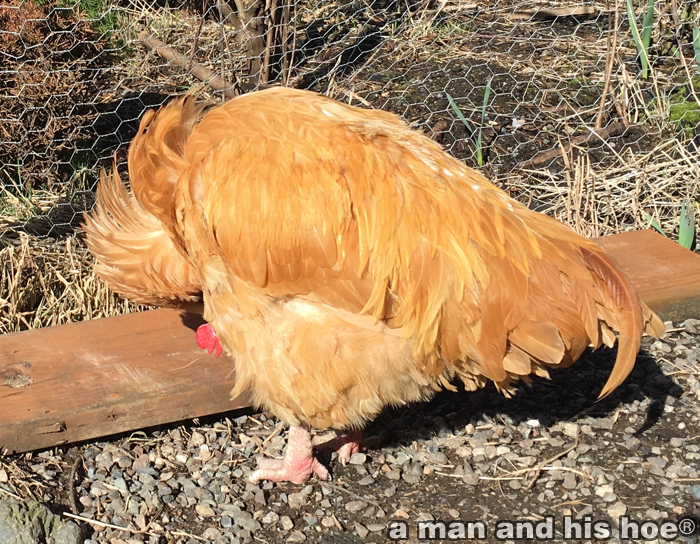
Billy is enjoying the early spring sunshine. This is his eighth spring. He’s such an old man. He’s the oldest chicken here. Each morning when I see him, it makes me happy. “Billy is still here,” I say. “It’s a good morning.”
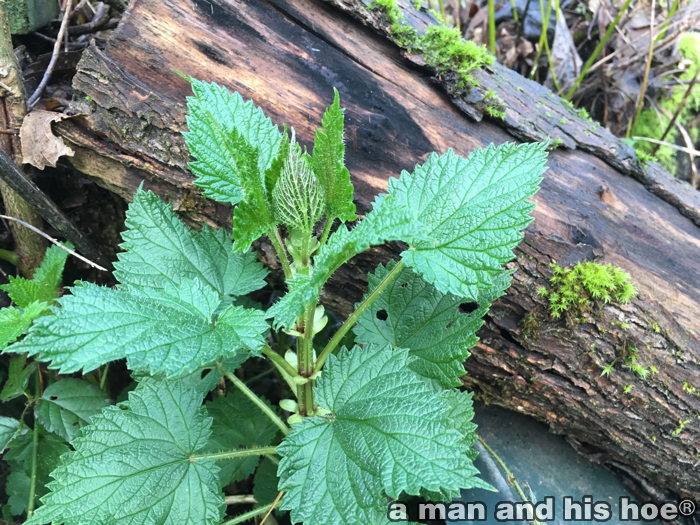
The stinging nettles grow taller every day. Touch them with your fingers and you’ll feel the burn of spring in your fingers for a few days, maybe a week. It’s not a blistering, frightening, insufferable, life-threatening burn like poison ivy or poison oak. It’s an “ouch” and then your fingers tingle like they’re high or something. It’s sorta meditative. It’s just enough tingling to make you aware of your fingers, to make you be present. In a few days it’s gone and you’re tempted to touch them again.
-
沈丁花 – Chinchōge
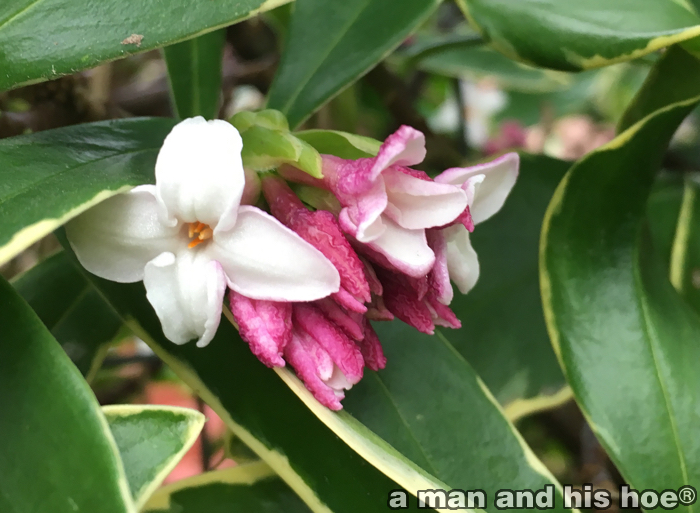
Few flowers smell as sweet as sweet daphne. It blooms in late winter and early spring, filling the air with sweetness. You can’t smell it and be sad. A native of southern China, it is popular in Japan. The Korean name, “churihyang” means a thousand mile scent, a very fitting name as its fragrance carries a long way.
I remember the first time I biked past one and had to stop to see what flower smelled so wonderful so early in the spring. I asked the woman at the house where it was blooming, what it was, and she told me and said I could take a cutting. “Stick it in the ground and it will grow,” she said. I thanked her, but since I didn’t have a garden at the time, I left without a cutting. Now I have a large bush which is in full bloom.
